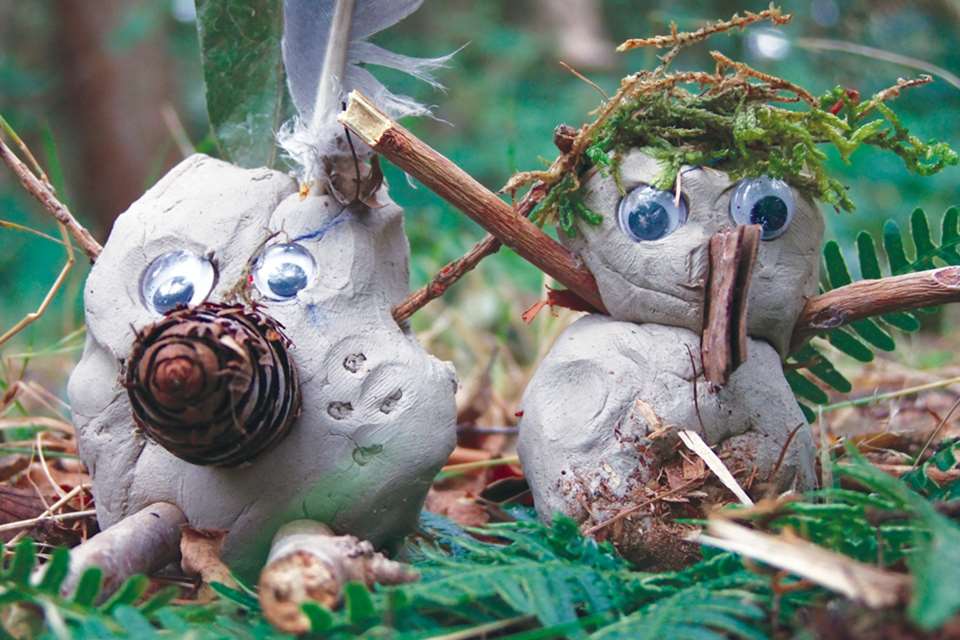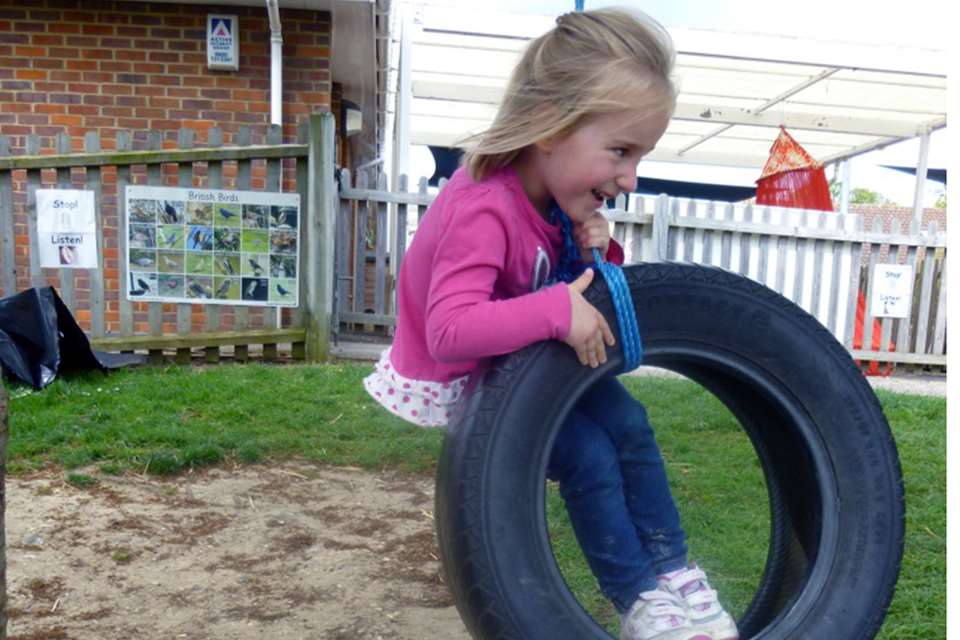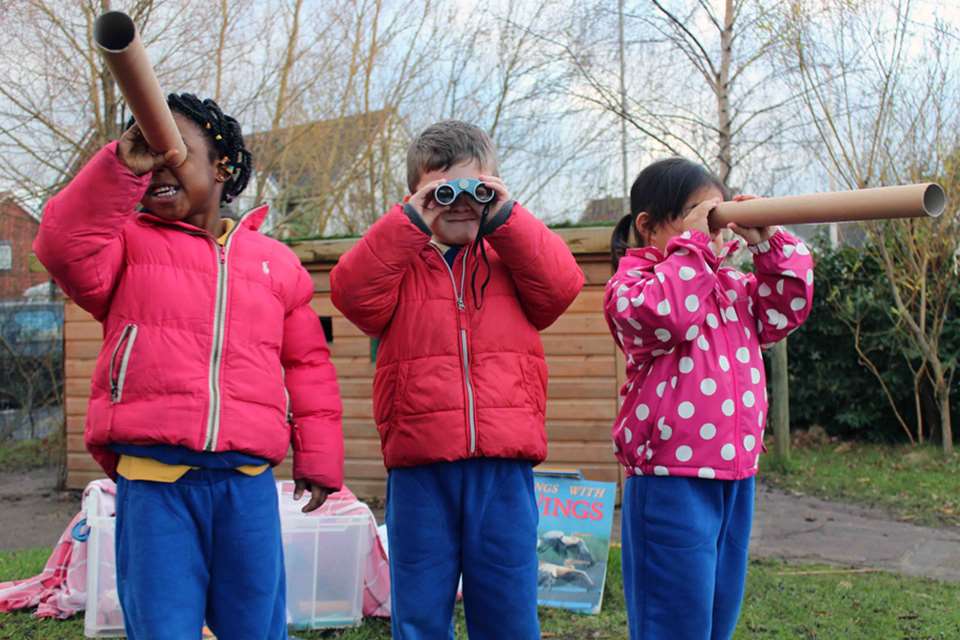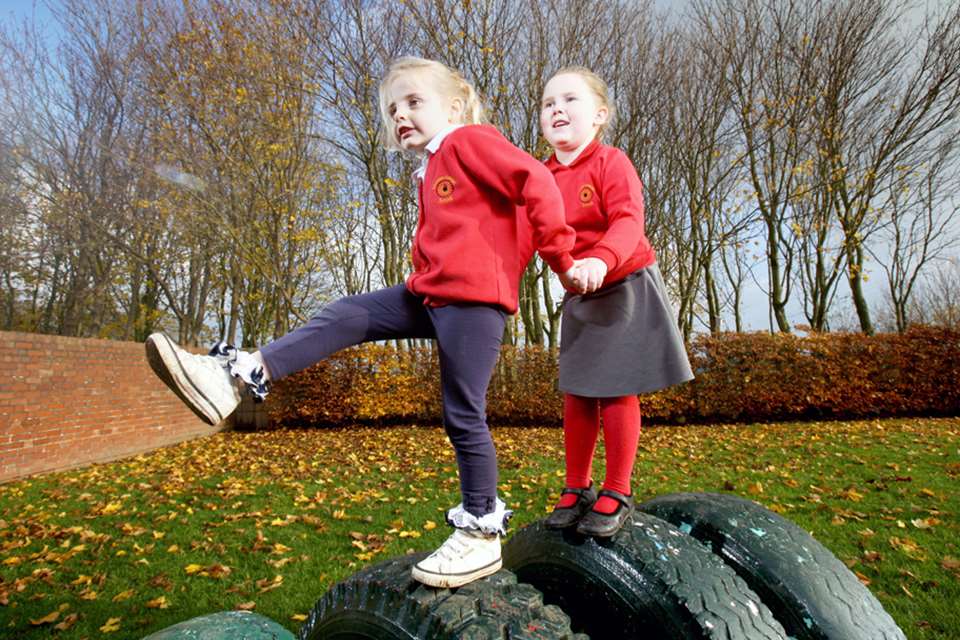Enabling Environments: Outdoors - Out of the woods
Jeanette Hill
Monday, June 27, 2016
Developing a challenging outdoor environment that is as exciting as a forest doesn’t need to cost the earth, explains Jeanette Hill

Redcliffe Nursery School, in the heart of Bristol, is surrounded by high-rise council flats and located within one of the most deprived areas of the country. Our children have access, one day a week, to 2,000 sq m of Forestry Commission land, a 10-minute drive away, and everyday access to the school’s outdoor area.
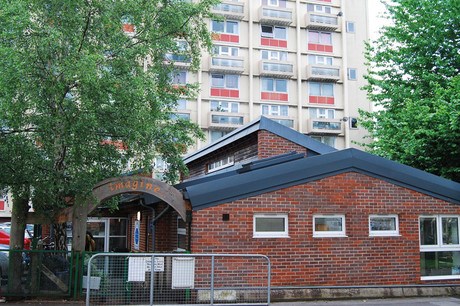
What became apparent to us was the extent to which the benefits of a forest experience were not being mirrored in our immediate nursery outdoor space. We aimed to find out why and set ourselves the goal of creating – on a very limited budget – a nursery space that could offer similar challenge, excitement and boundless possibilities of the forest.
Redcliffe is a National Teaching School and is comprised of a children’s centre and research base. The school, therefore, has developed a research culture, with staff regularly undertaking their own independent research to develop their thinking about children’s learning.
To research and develop the nursery’s outdoor area, staff observed how the children used existing resources, looked for ways to extend children’s learning and formulated a set of questions for analysis, including:
- ‘Are children encouraged and supported to set their own challenges?’
- ‘Do children assess and take risks within the two environments?’
From the observations, we could see that the nursery outdoor area, compared with the forest:
- was less exciting
- left the children less engaged and engrossed in imaginative play; and
- offered fewer opportunities for risk and challenge.
In contrast, during our forest experience, we push boundaries in the opportunities we offer to children, ensuring that all children’s needs are met, so that each individual child has a positive and successful time. We have created a can-do culture where children and adults search for ways through barriers to enable them to have experiences that may shape their lives in the future.
In the forest, the children gain a considerable amount of experience in both challenge and risk, enabling them to grow in self-confidence, have a sense of achievement and gain a greater sense of well-being. Children are able to assess and take risks depending on their individual level of skill and confidence.
However, it was the question of control that emerged as a crucial factor. At the nursery, it was the adults who would choose and set up much of the area, while in the unstructured space of the forest it was the children who were leading the experience, constantly transporting, adapting and using the resources as they wanted to.
CHANGING PERSPECTIVES
In response to our research, we have now taken major steps to transform our outdoor area and reassess our role as educators.
- We have extended their time for autonomous play and tried to remove the sense of ‘stop, start’ that had crept into the day.
- Where previously we would clear away resources at the end of a day, we now leave more and more out for the children to return to day after day, so they can continue to build on their interests.
- We removed resources that the children rarely used.
- We have built a much bigger and deeper (1m deep) sand pit, with an open-ended wooden structure on which to tie ropes and pulleys. The old sandpit was always busy, but was small, shallow and surrounded by fencing. Adults would often be supporting conflict resolution in this restricted place.
- Bikes and wheeled toys were very popular, but space meant playing on them was limited to a few children at any one time and restricted other forms of play. Now we only offer the wheeled toys sometimes, but if a child asks then that is OK.
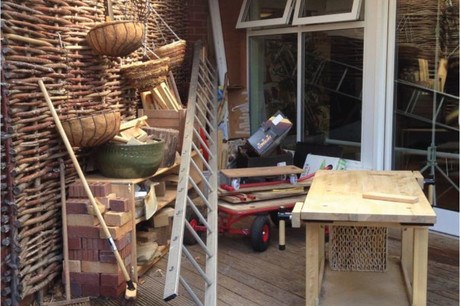 To introduce the challenge, excitement and adventure of the forest experience, we have introduced a range of open-ended, reclaimed and natural resources such as ladders, ropes, tyres and wooden boxes (see box).
To introduce the challenge, excitement and adventure of the forest experience, we have introduced a range of open-ended, reclaimed and natural resources such as ladders, ropes, tyres and wooden boxes (see box).
Our space has been influenced by the inspirational Plas Madoc playground for older children in North Wales. Filled with junk and with a sign saying ‘A place full of possibilities’, Plas Madoc was based on adventure playgrounds that were created on bomb sites in Denmark after the Second World War. Claire Griffiths, who opened the site, comments, ‘It is fantastic – but in an ideal world, there would not be a fence around it.’
So, rather than thinking of a well-planned, structured space that makes adults feel safe and secure, our focus is now on providing more challenging moveable, flexible and open-ended, resources. The area is in a constant state of change. The outside area now looks more like a reclamation yard, with endless possibilities and affordances, rather than a safe, adult-engineered space.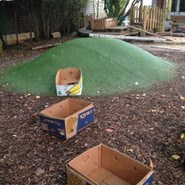
Adults leave piles of large and sometimes heavy equipment outside for the children to use.
Children now set up the space, are able to select equipment and loose parts from an area that looks like a builders’ yard and are free to move things from one place to another, adapting and changing it as they wish. One group of children took a giant wooden box, loaded it up with cushions, a picnic, ropes and tarpaulin and went on adventures in their hot-air balloon. Bristol hosts Europe’s largest hot-air balloon festival and we have now managed to obtain an old hot-air balloon basket, which has offered even more exciting opportunities for the children’s imagination and learning.
Our two-year-olds also have use of wooden boxes for their imaginative trips in boats, planes, buses and trains. At present, one is elevated in such a way that it tips from side to side and offers lots of challenge around balance and stability.
ATTITUDE
Creating such an exciting outdoor experience for young children requires a positive mindset on the part of practitioners. They need to be responsible but not fearful or inhibited by concerns about health and safety. A negative attitude prevents children from being able to assess and take risks for themselves, while a positive approach, as Gill (2008) says, enables adults to look for the risk benefits.
Our thinking has gone beyond looking for risks in a situation to now focusing on possibilities and opportunities that a situation could create. By giving children complete autonomy, allowing them to make decisions independently in a safe space, we have observed their confidence flourish and grow.
Children who were quiet or withdrawn, perhaps sometimes unseen in the busy open-plan nursery environment, often had a much stronger voice and became more visible within the wild, unstructured forest. Gray (2013)argues that we ‘have forgotten that children are designed by nature to learn through self-directed play and exploration, and so, more and more, we deprive them of freedom to learn, subjecting them instead to the tedious and painfully slow learning methods’.
As well as the functions of the natural environment, Gibson (1979) considered people to be able to offer a variety of different experiences for children, based on their attitudes. Stephenson (2003) comments, ‘Young children will frequently seek out and enjoy physical challenges in their play… opportunities to do this depended on the teachers’ attitudes.’
We wanted our children to have a proactive approach to risk and challenge and not be deterred by setbacks or failure, to show determination and perseverance. Developing resilience at such an early stage in life has been proved to show that children will have a variety of skills to use when faced with complex situations. They will be more likely to recover quickly from failure, showing a willingness and persistence to revisit challenge again and again.
It has not been easy to change the attitudes of staff or parents. Our fear as adults can distort the potential benefits for children. Our research at Redcliffe has shown that familiarity builds confidence and helps to break down psychological barriers. Louv (2005) suggests that if children do not experience risk-taking outdoors, then other risk factors may come into place, ‘including risk to physical and psychological health, risk to the child’s concept and perception of community, risk to self-confidence and the ability to discern true danger and beauty’.
AFFORDANCES…POSSIBILITIES
Proactively looking for benefits in a situation will give children opportunities to make decisions for themselves and develop strategies to be able to cope with the consequences. Fjortoft (2001) believes that children intuitively know what to do in outdoor spaces and how to use landscape for physical challenges in their play. Having an open-minded health and safety officer to work alongside us has certainly helped to give us confidence and question if asked to remove things, for example ropes/tyres, from our outside area.
We are now happy to transfer the control to the children, knowing that it is a safe space and that they will make decisions for themselves about their own capabilities. We have also become aware that the practitioners/teachers need to have a constant awareness to look for opportunities for deeper-level learning. It is the adult who provides this, offering facts and open-ended questions spontaneously, without planning or resource-gathering beforehand. For example, the adult may provide resources immediately so learning might be extend at that time, not waiting for the next session, when the moment may be lost.
Recently a child noticed an apple high up on a tree. The teacher asked the children to formulate some solutions to get the apple. Children offered many different ideas, for example: asking a giraffe to get it; using a long brush; standing on a box; using a ladder and using a longer ladder. The teacher supported these ideas, a full-length ladder was sought and a child climbed up it and the apple was picked and shared with the group.
It is essential to emphasise the importance of the role of the adult in extending and supporting children’s learning based on their knowledge of the child’s own natural curiosities and individual lines of enquiry. Pioneers of the development of outdoor play in England, such as Susan Issacs and Margaret McMillan, have been influential in the role of the adult. Tovey (2014) describes this attitude as ‘A respect for children, a view of children as competent, and trust in their growing abilities to do things for themselves in a challenging but supportive environment where the role of the adult is key.’ 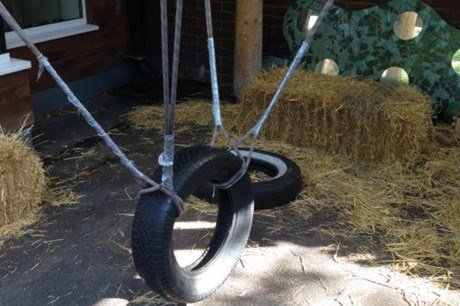
Resource suggestions
Reclamation and builders’ yards, DIY stores, local gardening centres and city council depots are all great sources of open-ended materials for creating a challenging outdoor area.
Resources to consider providing at your setting are:
- ladders, in metal and wood, large and small, including full-size
- rope of varying thickness and length
- large tyres (with holes drilled in them to prevent water from collecting inside)
- large wooden cable reels in varying sizes
- large wooden crates and pallets
- nets of varying thickness and size of holes
- boxes of varying shapes, size and materials
- large cardboard tubes (available from carpet shops) in varying thickness and length
- old, used scaffolding planks, pieces of wood
- wheelbarrows, both adult- and child-sized
- trolleys, in different shapes and sizes
- several water butts with taps
- water hoses with split taps and timers
- tubing, pipes, funnels, shower heads
- old sinks, buckets and containers
- stones, gravel, bricks and breeze blocks
- den-building equipment
- logs, sticks, leaves, conkers and acorns
- pebbles, shells, seaweed (limit the amount – we don’t want to spoil the planet!)
In contract: Forest v Nursery
Forest Nursery
2,000 sq m space 50 sq m space
no boundaries fenced boundaries
peace and quiet traffic noise and sirens
10-14 children 60-plus children
natural resources purchased resources
endless resources limited resources
total free time timetabled time
freedom restriction
autonomy some autonomy
weather influences weather restrictions
wild birds pigeons and seagulls
wild animals pets
Jeanette Hill is the associate head at Redcliffe Nursery School.


